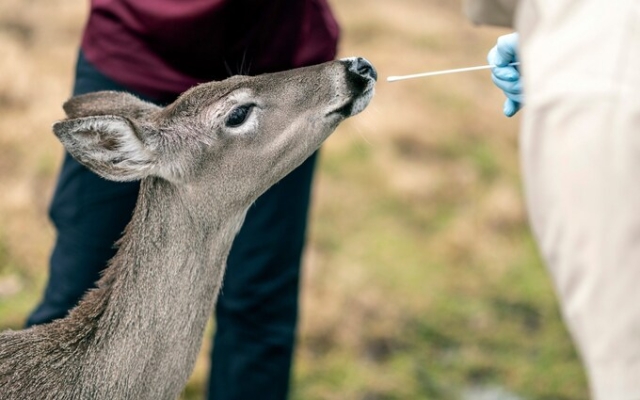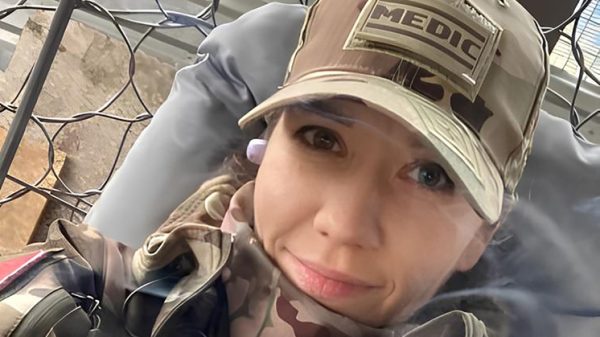 A researcher tries to swab a white-tailed deer at the Texas A&M University Wildlife Center. Photo: Sergio Flores/NYTNS
A researcher tries to swab a white-tailed deer at the Texas A&M University Wildlife Center. Photo: Sergio Flores/NYTNS
Analysis shows that humans have transmitted the virus to white-tailed deer hundreds of times . , and that it likely spread widely among them.
The discovery by the USDA Animal and Plant Health Inspection Service added to concerns that deer could become a long-term source of the virus and create new variants.
p>
«Deer regularly interact with humans and are often found in human habitats — near our homes, pets, sewers and garbage,» says XuFeng Wang, a zoonoses expert at the University of Missouri and author of the paper.
“The ability of SARS-CoV-2, or any other zoonotic disease, to persist and develop in wild animal populations may pose a unique public health risk.”
A total of 109 “independent adverse events.” have been identified.
There is no evidence that deer played a significant role in the transmission of the virus to humans, but the results have raised many public health concerns, such as that the animal population may be causing the persistence of variants of the virus that are no longer widespread in humans. < /p>
“Overall, this study demonstrated that frequent introductions of new human viruses into free-range white-tailed deer continue to occur and that SARS-CoV-2 VOCs are able to persist in white-tailed deer even after these variants have become rare in humans.” , the study says.
The new study confirms previous reports that some variants of Covid, including alpha and gamma, continued to spread among deer after becoming rare in humans.
The possibility of new animal hosts can also give the virus the opportunity to mutate and evolve, which can lead to new variants. There are concerns that Covid could be spreading to other animals.
The Centers for Disease Control and Prevention has previously warned people to avoid close contact with wild animals and their droppings to minimize the spread of Covid.
p>






















































Свежие комментарии